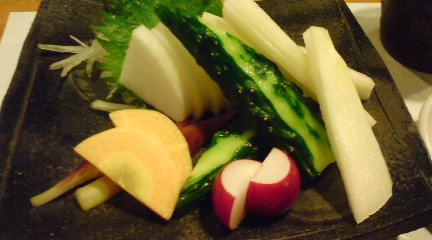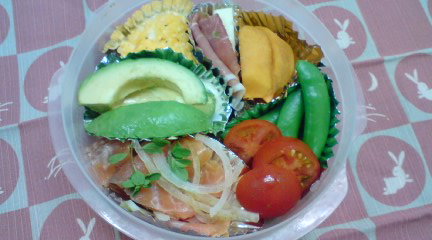
The line-up!
When Bryan and Sayuri Baird founded Baird Brewery in March 2000 in Numazu City, a celebrated harbor in Shizuoka Prefecture, very few people could have imagined than no less than nine years later, their beers would be savored on both sides and across the Pacific Ocean, and in pubs and bars dotted all over Japan!
What is the secret of a couple born in Okinawa (Sayuri) and in the US (Bryan), who has succeeded in managing their business and raising their children at the same time?
In Bryan’s words, they are a family born of a deep passion for beer and a great reverence for brewing history, tradition and culture. Their motto is “Celebrating Beer”, meaning to them not simply the production and sale of beer of character and quality but even more importantly but also entailing the comprehensive enjoyment of beer in a way that enhances the overall experience of life.
Baird Beer is, above all, an experience in flavor.
The flavors of malt and hops and yeast are highlighted and celebrated to their utmost.
The basic formula for the entire line-up of hand-crafted Baird Beer is the same: “Balance + Complexity = Character”.
Baird Beers burst with flavor and character rarely witnessed in this country.
They are made in tiny batches with painstaking care, passion and reverence to tradition.
All bottled Baird beer is unfiltered and undergoes a secondary fermentation in the bottle, producing a lovely and completely carbonation. Yeast sediment is at the bottom of the bottle, meaning that beer should be poured gently into your glass so as to leave the yeast sediment in the bottle.

The founders!
Bottle-conditioned Baird Beer requires refrigeration, but for maximum enjoyment should be drunk at cool (8~12 C), not cold temperatures.
Although the beer can cold-aged for long periods, in general, it is highly recommended to drink them sooner than later.
Baird beers are available both as year-round brands and seasonal brands.
Year-round brands are of eight kinds:
Wheat King Ale, Rising Sun Pale Ale, Red Rose Amber, Teikoku IPA, Angry Brown Ale, Kurofune Porter and Shimaguni Stout.
The brewers of Baird Beer annually craft a plethora of seasonal beers because they are convinced that beer is simply the most diverse and exciting beverage on Earth.
Seasonal Baird Beers are produced in of five seasonal beer series:
Baird lager Beer Series, consisting of top-fermenting ales in styles such as Bock, Pilsner, Marzen and so forth.
Baird Strong Ale Beer Series with high-gravity, high-alcohol brews similar to Imperial Stout, Wheat and Barley Wine and strong Scotch Ale.
Baird Brewmaster’s Select Beer Series made with unusual ingredients such as fruits and spices , a traditional hallmark of Belgian brewing. Even Japanese mikans and kabocha, coffee and spices find their way into these brews!
Baird Beer Classics conceived to recreate classic ale styles and reminisce about the past.
Baird Wood-Aged Beer Series consisting of brews aged inside wood casks which formerly held bourbon whisky or wine, a tradition recently pioneered by craft brewers in the U.S.
All beers are available on tap, in cask-conditioned at their three Taprooms in Numazu City and Tokyo (Nakameguro and Harajuku), as well as at select pubs and restaurants in Japan.
Bottle-conditioned Baird Beer may be purchased direct from the Brewery through their website estore and through select pubs, restaurants and liquor shops in Japan.
For a complete listing of Baird beer retailers in Japan, visit the retailers section of their website at
http://bairdbeer.com/en/bairdbeer/retailers

The Fishmarket Taproom in Numazu City
Baird Beer Company presently runs three Pubs:
-Fishmarket Taproom in Numazu City.
This is where all began for Baird ber. The heart, soul, sweat and tears of thir enterprise reside there, Open in July 2000, the Numazu taproom spent many years ignored by the locals. Fortunately, though, a friendly neighborhood atmosphere, characterful beer, great beer-inspired food, and matchlee camaraderie seem to have won out. The fact that their prices are for the most reasonable for craft beer anywhere in Japan is a plus, too.
This is where you will find the brewers and owner-partners of Baird Beer drinking on a regular basis., as well as the oldest Baird fans!
Opening hours: Monday and Wednesday through Friday: 17:00~24:00, Saturday and Sunday and National Holidays: 12:00~24:00. Closed on Tuesdays
Address: 19-4, Senbonminato-cho, Numazu City, Shizuoka Prefecture, 410-0845
Phone: 055-963-2628
Access: Tokaido Line=get off at Numazu Station. Shinkansen=disembark at Mishima and change to the Tokaido Line.
Nakameguro Taproom in Tokyo
The Nakameguro Taproom opened in May 2008 as Baird’s first Tokyo-area pub. Like the original Fishmarket Taproom, it enjoys an all-natural wood and brick décor that is warm, inviting and unpretentious. It has space to seat up to 60 patrons, which makes an ideal venue for parties and group events.
Twenty taps and four hand-pumps are devoted to the perfect dispense of a terrific variety of Baird Beer. They have added four new taps dedicated to superb rotation of other world-class craft beers.
Opening hours: Weekdays: 14:00~24:00, Saturday and Sunday and National Holidays: 12:00~24:00.
Address: Nakameguro GT Plaza C-Block 2F, 2-1-3, Kamemiguro, Meguro Ku, Tokyo:
Phone: 03-5768-3025
Access: Within walking distance of Nakameguro Station, Tokyutoyoko Line
Harajuku Taproom
Opened in August 2009, it is distinctively a Japanese-style pub in the izakaya and yakitori fashion.
The low ceiling and expert wood craftsmanship contribute to an intimate, communal environment that disguises the ample seating capacity of 40. A significant percentage of the seating is devoted to counter space around the 15-tap bar and small open kitchen.
Two hand pumps are also in action dispensing Baird beer in Real Ale style (including the year-round Harajuku Ale!).
Opening hours: Weekdays: 17:00~24:00, Saturday and Sunday and National Holidays: 12:00~24:00.
Address: No-surrender Building 2F, 1-20-13 Jingumae, Shibuya Ku, Tokyo:
Phone: 03-6438-0450
Access: Within walking distance of Hatajuku Station, Takeshita Exit, Yamate Line
For complete information,orders and blogs, check:
HOMEPAGE (English)
RECOMMENDED RELATED WEBSITES:
-Sake: Tokyo Through The Drinking Glass, Tokyo Foodcast, Urban Sake, Sake World
-Wine: Palate To Pen
-Beer: Good Beer & Country Boys, Another Pint, Please!
-Japanese Pottery to enjoy your favourite drinks: Yellin Yakimono Gallery, Warren Bobrow, Tokyo Terrace, Think Twice, Frank Fariello, Mangantayon, Numazu Traveller
Please check the new postings at:
sake, shochu and sushi
—————————————-
日本語のブログ
—————————————-



































